Ramu rainbowfish - Glossolepis ramuensis
Scientific name: Glossolepis ramuensis
Common name: Ramu rainbowfish
Family: Melanotaeniidae
Usual size in fish tanks: 6 - 8 cm (2.36 - 3.15 inch)
014
Recommended pH range: 7.3 - 7.8
Recommended water hardness: 5 - 13°N (89.29 - 232.14ppm)
0°C 32°F30°C 86°F
Recommended temperature range: 25 - 28 °C (77 - 82.4°F)
The way how these fish reproduce: Spawning
Where the species comes from: Oceania
Temperament to its own species: peaceful
Temperament toward other fish species: peaceful
Usual place in the tank: Middle levels
Introduction
Glossolepis ramuensis, commonly known as Ramu Rainbowfish, is a peaceful and colorful species native to Papua New Guinea. Known for their shimmering scales and active swimming behavior, these fish are a vibrant addition to community aquariums. They thrive in groups and are ideal for aquarists looking for an engaging and eye-catching species.
Food and Feeding
Ramu Rainbowfish are omnivorous and thrive on a varied diet. Provide a staple diet of high-quality flake or small pellet food to meet their nutritional needs. To enhance their coloration and health, supplement with live or frozen treats such as brine shrimp, daphnia, or bloodworms twice a week. Feeding small portions multiple times a day helps mimic their natural grazing behavior and keeps them active.
Habitat and Tank Requirements
To replicate their natural habitat, set up a spacious tank with plenty of swimming areas and some dense planting along the edges. Suitable plants include Vallisneria (Vallisneria spiralis), Java Fern (Microsorum pteropus), and Water Wisteria (Hygrophila difformis). Maintain water parameters with a pH of 7.3-7.8, hardness of 5-13°N (89.29-232.14 ppm), and a temperature between 25-28°C (77-82.4°F). Use a tight-fitting lid, as these fish are excellent jumpers. A gentle current and regular water changes are essential for their well-being.
Sexing
Male Ramu Rainbowfish are slightly larger and display more vibrant coloration than females, particularly during the spawning season. Females are generally smaller and have a more subdued appearance.
Breeding
Breeding Glossolepis ramuensis is straightforward with proper preparation. Set up a breeding tank with Java Moss or spawning mops to provide a safe site for egg-laying. Condition the breeding pair with live or frozen foods for two weeks before introducing them to the breeding tank. Spawning occurs over several days, with a few eggs laid each day. Once spawning is complete, remove the parents to prevent them from eating the eggs. The eggs typically hatch within 48 hours, and the fry become free-swimming shortly after. Feed the fry with Infusoria or other microscopic foods, gradually transitioning to baby brine shrimp as they grow.
Lifespan
With proper care, the expected lifespan of Glossolepis ramuensis is approximately 5 years, making them a rewarding long-term addition to aquariums.
Behavior and Compatibility
Ramu Rainbowfish are peaceful and social fish that should be kept in groups of at least six to encourage natural schooling behavior. They are excellent additions to community tanks and coexist well with other non-aggressive species such as Harlequin Rasboras (Trigonostigma heteromorpha), Neon Tetras (Paracheirodon innesi), and Dwarf Gouramis (Colisa lalia). Their active nature makes them an engaging species to watch, especially in the middle levels of the tank.
Short Description
Glossolepis ramuensis, or Ramu Rainbowfish, is a peaceful, colorful species perfect for planted community aquariums. Their shimmering scales and schooling behavior make them a visually appealing choice for aquarists. Ensure a spacious tank with a secure lid and maintain pristine water conditions to keep them thriving.
Pictures
Bought by aqua-fish.net from jjphoto.dk.
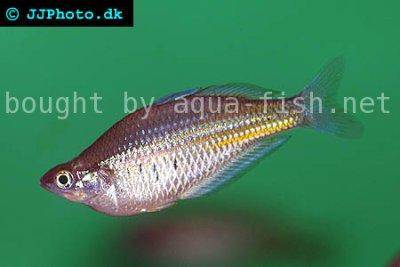


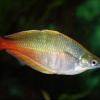 Bleher’s
Bleher’s 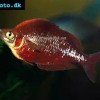 Red
Red 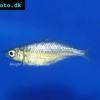 Wanam
Wanam 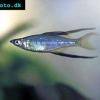 Threadfin
Threadfin 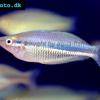 New
New 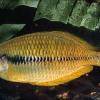 Yakati
Yakati 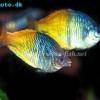 Boesemani
Boesemani 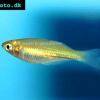 Crimson
Crimson 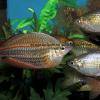 Australian
Australian 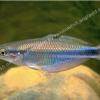 Goldie
Goldie 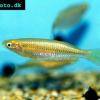 Slender
Slender 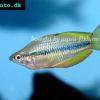 Lake
Lake 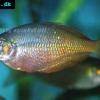 Irian
Irian 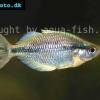 Kamaka
Kamaka 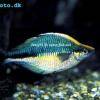 Lake
Lake 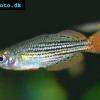 Dwarf
Dwarf 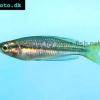 Black
Black 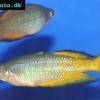 Parkinsoni
Parkinsoni 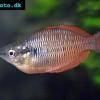 Sunset
Sunset 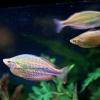 Neon
Neon 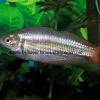 Western
Western 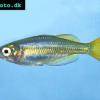 Inornate
Inornate 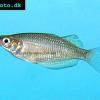 Ruby
Ruby 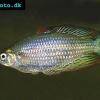 Eastern
Eastern 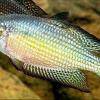 Desert
Desert 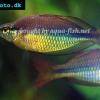 Regal
Regal